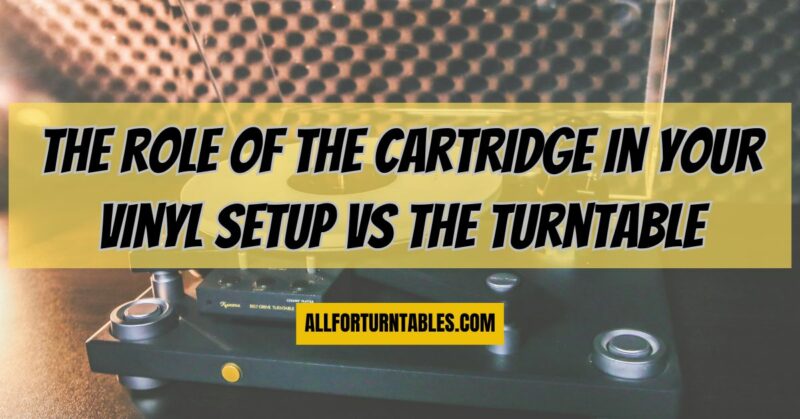In the world of vinyl records, the turntable and its components are at the heart of the audio playback experience. Two key components in this setup are the turntable itself and the cartridge. While both are essential, they serve distinct roles in delivering the rich, analog sound that vinyl enthusiasts cherish. In this article, we’ll explore the crucial roles of the cartridge and the turntable in your vinyl setup, highlighting their differences and importance.
The Turntable – The Foundation of Sound
1. Physical Playback
The turntable, often considered the cornerstone of any vinyl setup, is responsible for the physical playback of the vinyl record. Its main functions include spinning the record at the correct speed (e.g., 33 1/3 or 45 RPM) and supporting the tonearm and cartridge, allowing them to navigate the grooves of the record.
2. Mechanical Precision
Turntables are intricate mechanical devices designed to maintain a steady rotation speed and minimize vibrations, ensuring the accurate tracking of the stylus (needle) across the record’s surface. High-quality turntables employ precision engineering to reduce resonance and maintain consistent playback speed.
The Cartridge – The Translator of Sound
1. Reading the Grooves
The cartridge is the component responsible for reading the audio information encoded in the grooves of the vinyl record. It does so through the stylus (needle) attached to its tip. As the stylus traverses the grooves, it detects minute variations in the vinyl’s surface, which are then converted into electrical signals.
2. Signal Generation
Inside the cartridge, coils or magnets interact with the movement of the stylus to generate electrical signals. These signals are a direct representation of the audio recorded on the vinyl. The quality and precision of the cartridge directly impact the accuracy and quality of the sound produced.
Interplay and Importance
1. Symbiotic Relationship
The turntable and the cartridge share a symbiotic relationship in your vinyl setup. The turntable’s stability, rotation speed, and tonearm design directly influence the performance of the cartridge. Conversely, the cartridge’s tracking ability and sensitivity determine how faithfully the recorded sound is reproduced.
2. Cartridge Selection
The choice of cartridge significantly affects your listening experience. Different cartridges have unique tonal characteristics and tracking abilities. Audiophiles often select cartridges based on their preferred sound profile, whether it’s warm and lush or detailed and analytical.
3. Maintenance and Upgrades
Regular maintenance of both the turntable and cartridge is essential for optimal performance. Replacing a worn stylus or upgrading to a higher-quality cartridge can lead to significant improvements in sound quality, making it a valuable investment for vinyl enthusiasts.
Conclusion
In your vinyl setup, the turntable and cartridge play distinct yet interrelated roles. The turntable provides the mechanical precision necessary for vinyl playback, while the cartridge translates the physical grooves into electrical signals, preserving the nuances and details of the music. The quality and synergy between these components are vital for achieving the rich and authentic analog sound that vinyl records are known for. Whether you’re a casual listener or a dedicated audiophile, understanding the roles of the cartridge and turntable in your vinyl setup can enhance your appreciation of the vinyl listening experience.


